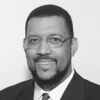The "Emergent Workforce" of the 21st Century
Who is the "emergent workforce" of the 21st century? They're individuals who take control of their own careers and search for a balance between life and work. They're both young and mature workers. They're self-directed, self-motivated, and self-reliant. They're workers who will stay employed in the 21st century workplace because they work "smart" in their present job.
According to a 2003 national Spherion workforce study of more than 3,000 working adults, more workers were shifting toward an emerging mindset, and the traditional worker was fading from view. The survey indicates that in 2003, 31 percent of the polled workers were classified as emergent, 48 percent as migrating (moving from traditional to emergent), and 21 percent were classified as traditional workers (advancement based on length of service, loyalty as defined by tenure, job change viewed as damaging to one's career). By 2007, Spherion predicts 52 percent of the workforce will be classified as emergent.
There's no doubt that there will be a shortage of skilled workers within the next five years-mainly due to baby boomers retiring. Workforce experts are predicting a "worker dearth" of skilled workers as early as 2006. Those with marginal education and technical skills will find themselves competing with the emergent workforce. The emergent workforce will continue to sharpen their technology skills, upgrade their education, and enhance their soft skills such as teamwork, customer service, problem-solving, and oral and written communication. Although soft skills can be hard to quantify, they're invaluable, and those who've developed these skills will be better equipped for the 21st century workplace.
How can the local workforce system help individuals become part of the emergent workforce? The local workforce system is guided by business-led workforce boards and local elected officials. This workforce system can customize in-house programs to cross-industry or provide industry/occupation specific training. The greatest area of job growth will come from small businesses. The local workforce system can provide training connected to the creation of new enterprises. The workforce system can also help by providing centers of support for career advancement and career realignment. This workforce system can assist in understanding the current and anticipated workforce requirements of employers. The workforce system is also equipped to develop career-ladder strategies. Worker training must be at the center of a broad effort to create an emergent workforce that can drive economic growth.
In summary, there will be less job security in the 21st century workplace. The only job security will be for those who replace it with "employability" security. Emergent workers will be ready, willing, and able to meet new economic and workforce challenges. They'll embrace continuous learning, be flexible and adaptable to new environments, stay ahead of the curve by monitoring upcoming trends, and be able to spot a new opportunity and quickly move to take advantage of it. IBI
According to a 2003 national Spherion workforce study of more than 3,000 working adults, more workers were shifting toward an emerging mindset, and the traditional worker was fading from view. The survey indicates that in 2003, 31 percent of the polled workers were classified as emergent, 48 percent as migrating (moving from traditional to emergent), and 21 percent were classified as traditional workers (advancement based on length of service, loyalty as defined by tenure, job change viewed as damaging to one's career). By 2007, Spherion predicts 52 percent of the workforce will be classified as emergent.
There's no doubt that there will be a shortage of skilled workers within the next five years-mainly due to baby boomers retiring. Workforce experts are predicting a "worker dearth" of skilled workers as early as 2006. Those with marginal education and technical skills will find themselves competing with the emergent workforce. The emergent workforce will continue to sharpen their technology skills, upgrade their education, and enhance their soft skills such as teamwork, customer service, problem-solving, and oral and written communication. Although soft skills can be hard to quantify, they're invaluable, and those who've developed these skills will be better equipped for the 21st century workplace.
How can the local workforce system help individuals become part of the emergent workforce? The local workforce system is guided by business-led workforce boards and local elected officials. This workforce system can customize in-house programs to cross-industry or provide industry/occupation specific training. The greatest area of job growth will come from small businesses. The local workforce system can provide training connected to the creation of new enterprises. The workforce system can also help by providing centers of support for career advancement and career realignment. This workforce system can assist in understanding the current and anticipated workforce requirements of employers. The workforce system is also equipped to develop career-ladder strategies. Worker training must be at the center of a broad effort to create an emergent workforce that can drive economic growth.
In summary, there will be less job security in the 21st century workplace. The only job security will be for those who replace it with "employability" security. Emergent workers will be ready, willing, and able to meet new economic and workforce challenges. They'll embrace continuous learning, be flexible and adaptable to new environments, stay ahead of the curve by monitoring upcoming trends, and be able to spot a new opportunity and quickly move to take advantage of it. IBI

